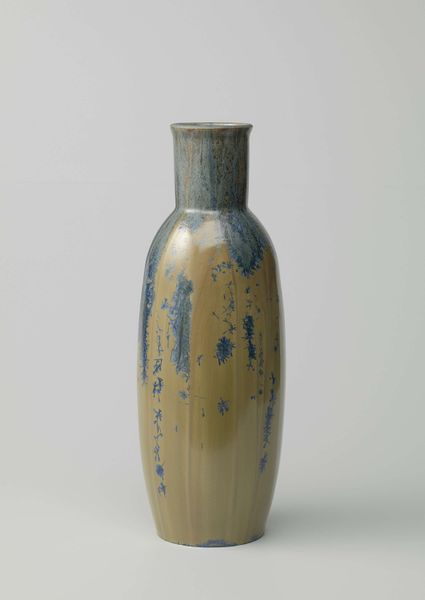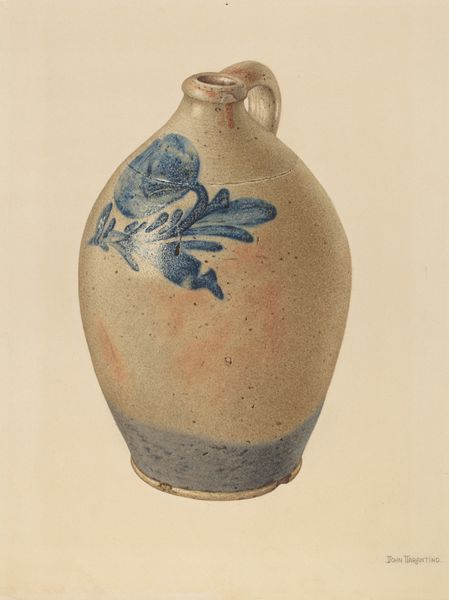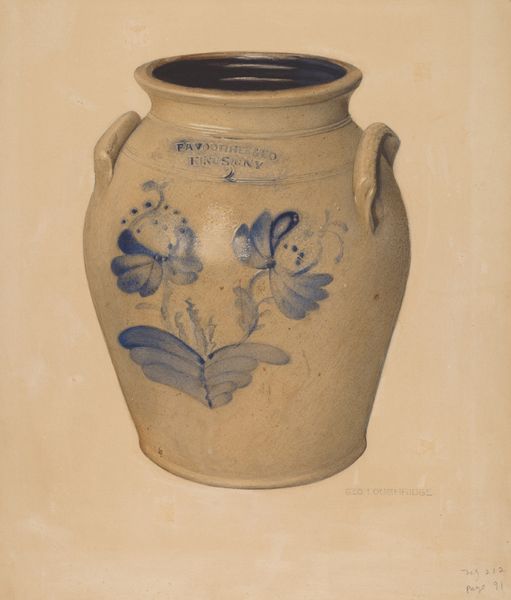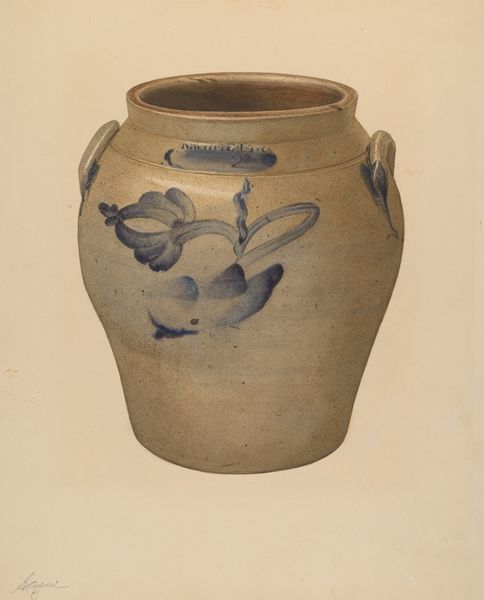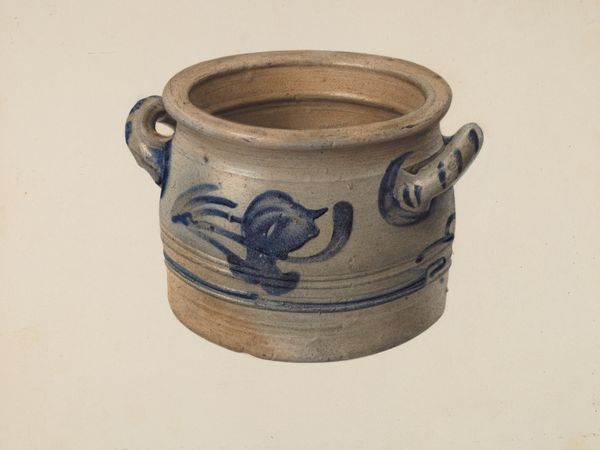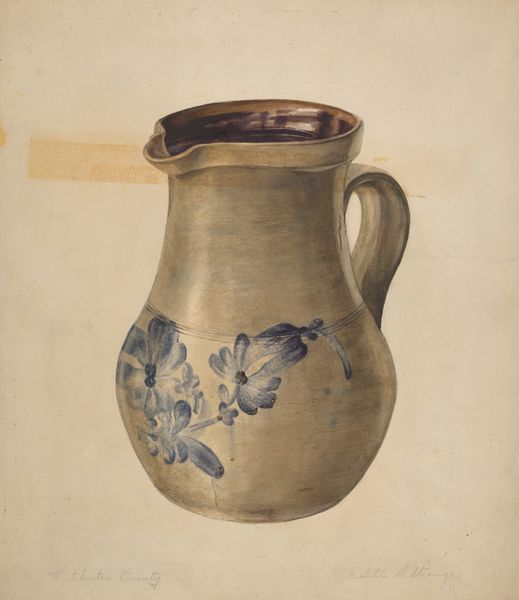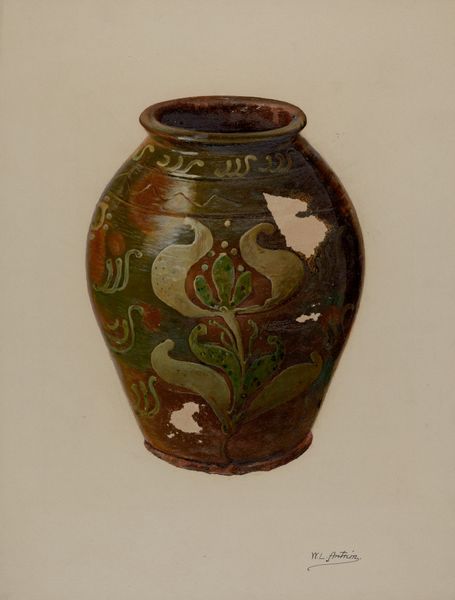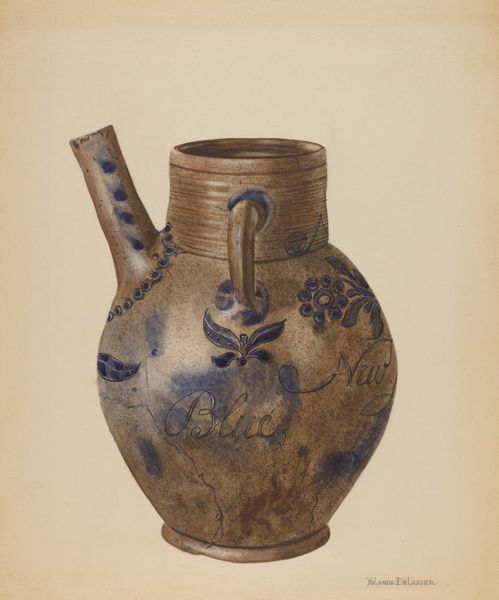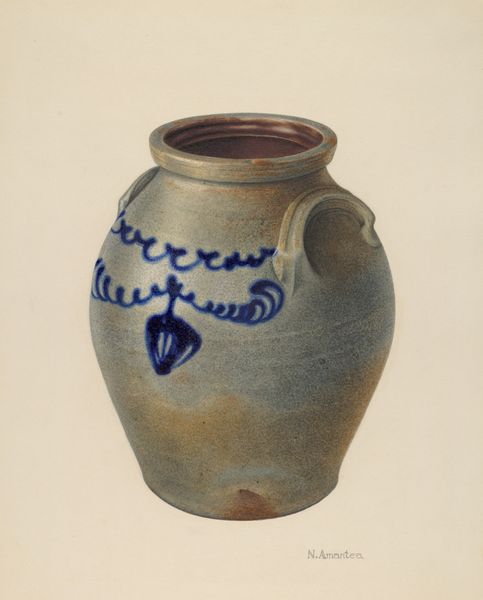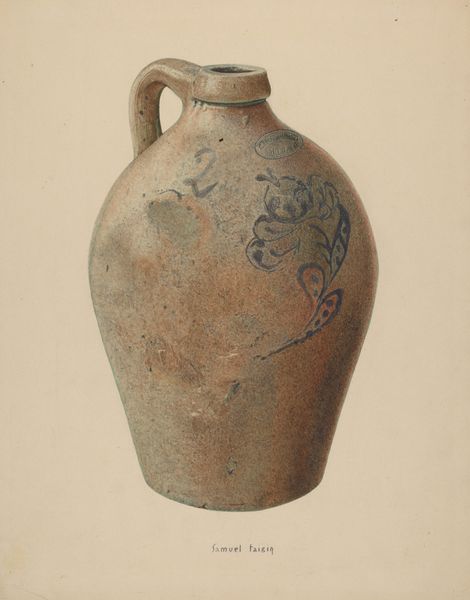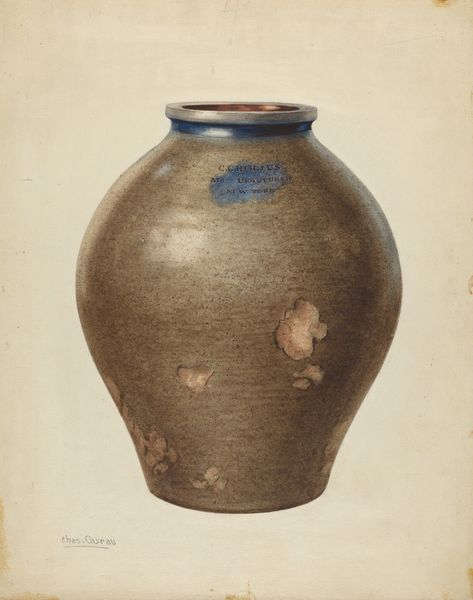
ceramic, earthenware, sculpture
#
ceramic
#
earthenware
#
stoneware
#
sculpture
#
orientalism
#
ceramic
Dimensions: height 37.2 cm, diameter 27.3 cm, diameter 14.3 cm
Copyright: Rijks Museum: Open Domain
Editor: This earthenware vase, created by Ernest Chaplet around 1885, is lovely. The muted colors and the stylized bird give it such a serene, almost nostalgic feel. What do you see in this piece? Curator: I see a conversation between cultures, a dance of symbols across time. Chaplet, working in France, engages with the Japonisme craze of the late 19th century. The bird, very likely a swallow, immediately catches my eye. Editor: What’s significant about the swallow? Curator: Across many cultures, the swallow signifies home, return, and good luck. Sailors, for instance, often got swallow tattoos to symbolize a safe return voyage. Here, the bird becomes a visual bridge between French and Japanese aesthetics. Note how the ceramic itself, with its textured surface and earthy tones, also connects with traditional Japanese pottery. Editor: So, it's not just a pretty vase, it's also communicating these layered meanings? Curator: Precisely. Consider the floral motifs too – chrysanthemums, perhaps? These are also laden with symbolism in East Asian art, often associated with longevity and joy. Chaplet isn't simply copying Japanese designs, but interpreting them, filtering them through his own cultural lens. Editor: It’s fascinating to think about how an object can hold so many interwoven stories. I’ll never look at a vase the same way! Curator: Indeed, and that is how visual symbols can remind us of enduring cultural memories and influences. The "Vase" is an invitation to explore cultural exchange, reminding us that beauty and meaning often lie in the intersection of different worlds.
Comments
rijksmuseum about 2 years ago
⋮
Like some painters, such as Van Gogh, potters also derived inspiration from Japanese art. This is evident in the motifs of swallows and Japanese cherry blossoms on this vase, which are incised or modelled in relief. Chaplet was the first to use simple stoneware for art pottery, to which he applied subdued colours using either glazes or slip (thin layers of liquid clay).
Join the conversation
Join millions of artists and users on Artera today and experience the ultimate creative platform.
